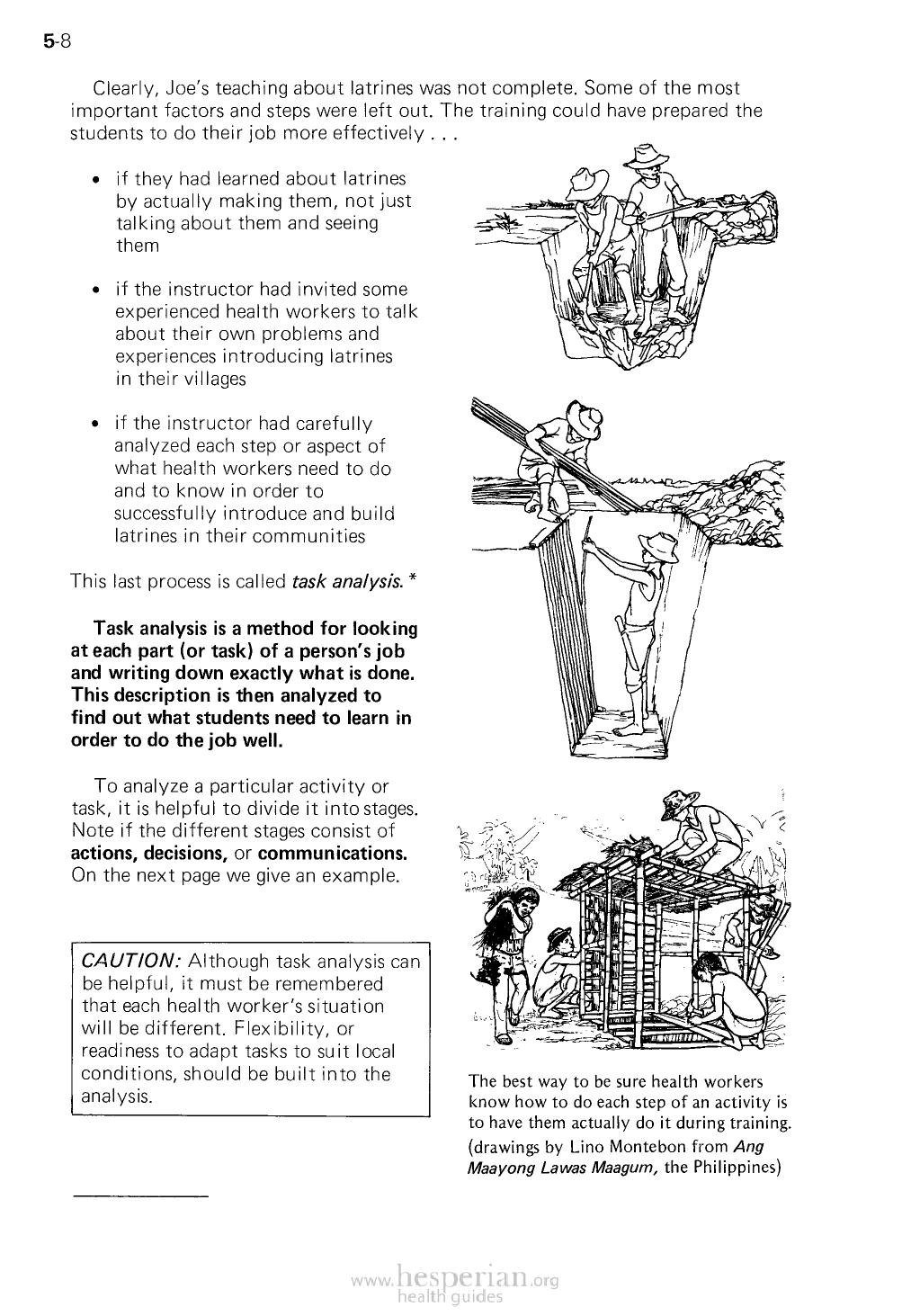
5-8
Clearly, Joe’s teaching about latrines was not complete. Some of the most
important factors and steps were left out. The training could have prepared the
students to do their job more effectively ...
• if they had learned about latrines
by actually making them, not just
talking about them and seeing them
• if the instructor had invited some
experienced health workers to
talk about their own problems and
experiences introducing latrines
• in their villages
• if the instructor had carefully
analyzed each step or aspect
of what health workers need
to do and to know in order to
successfully introduce and build
latrines in their communities
This last process is called task
analysis. *
Task analysis is a method for looking
at each part (or task) of a person’s job
and writing down exactly what is done.
This description is then analyzed to
find out what students need to learn in
order to do the job well.
To analyze a particular activity or task, it
is helpful to divide it into stages. Note if
the different stages consist of actions,
decisions, or communications.
On the next page we give an example.
CAUTION: Although task analysis can
be helpful, it must be remembered
that each health worker’s situation
will be different. Flexibility, or
readiness to adapt tasks to suit local
conditions, should be built into the
analysis.
The best way to be sure health workers
know how to do each step of an activity is to
have them actually do it during training.
(drawings by Lino Montebon from Ang
Maayong Lawas Maagum, the Philippines)
*These ideas for task analysis have been adapted from Teaching for Better Learning, by Fred Abbatt,
WHO, Geneva. 1980. www.who.int